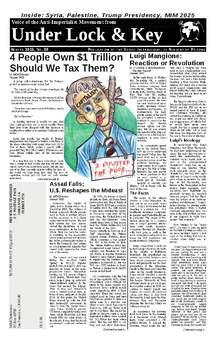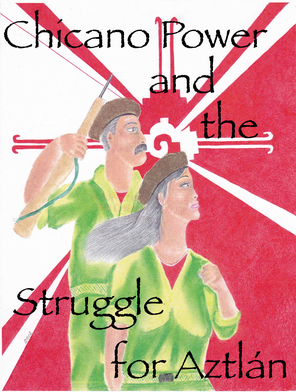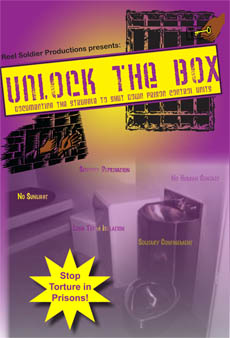I recently thumbed through a hand-me-down Under Lock & Key.
It was the September/October 2018 issue, No. 64, and had an overwhelming
inspiration to write pledging my allegiance to your cause, and to make
comment on some of the articles I read concerning offenses against
women/girls.
Mostly targeted to those of which appeared to be attempting to justify
their actions with the phrase “consensual” sex with under-aged girls. I
just hope my thoughts and writings will be as readily accepted as those
of others written!
Crimes against women are the most cowardly atrocious acts one can do.
Especially when it involves violent forcible rapes, on down to taking
advantage of under-aged girls, and I am ashamed and humiliated to be a
man during instances as these!
I don’t write from a dark hateful place neither in a negative energy,
but must say, if you are going to stand for a cause, especially a cause
such as the revolutionary one, stand tall and with integrity.
I consider myself a revolutionist, suffering through struggles just to
help change the oppressive abuse of authority being displayed by prison
officials.
Because the current government structure, as you all would say the
injustice system, is designed to make prisoners worse, most likely to
return, for their benefit. It appears their attempt is not to
rehabilitate but destroy, creating spitefulness and anger especially
when they get away with their injustices.
But falling victim to this cycle only lessens us as human beings, if we
get caught up in the wheel of things we are not living up to what we
claim to be standing up for, which is change.
We are ambassadors for change and must conduct ourselves accordingly. We
must stand out from the crowd, not be afraid of individuality. We must
carry our heads high and keep our shoulders squared ready to support the
weight of others, and to lend a shoulder to cry on if need be, with no
ghosts lingering there in the closet.
We must be an energy more spectacular than the universe, an energy that
gravitates others to us, a life energy that creates, cultivates and
protects those we have around us. Building blocks for them to stand
upon, for them who wish to embrace and enjoy change, something new. All
of what we’re allegedly standing for.
If not we are just a fake and a fraud and a continued part of an ongoing
dilemma. Then we are no different than an immoral cult with a fancy
name.
Young ladies (and young girls) should not be preyed upon by older guys,
(especially not us). Guys, even if she were to show interest, and
because you’re a type of role model with a higher standard of morality.
As a revolutionist we are obligated to change the exploitation of girls
and women alike. Instead, we should help her identify her potential,
help channel her energy into something more spectacular, building her up
to becoming a powerful leader of her own kind who could lead the way for
others who either of us probably could not reach and relate to.
I am sadly disgusted, if not outright disturbed, when a guy, especially
an alleged revolutionist claims consensual sex with a young girl. Are
you truly incapable of handling a woman who knows how to handle a man?
I will not forget to mention that more despicable crimes against women
like forcible rape with drugs, drink or intimidation. We should be
advocating for these women, just as well. We cannot continue to accept
these types of cowardliness and we as men are just as cowardly if we
refuse to intervene. If you see a woman in need of help, help her. Don’t
turn a blind eye to her black eyes, in the hallway or at the store, step
in.
If not where’s the revolution?? It isn’t simply a donation one goes
through with while you’re incarcerated? Or is it?
So then where does it start? With us here and now while in prison with
the wonderful help from those there on the outside who understand and
sympathize with our struggle of oppression, and who also want to unify
and make changes.
Us as prisoners must strive to finally become educated women and men. We
must come to realize the government down to the prison authorities have
things just the way they want them, conquered and divided, defeated and
hopeless (don’t think) (don’t know) and surely never united, they
snicker and laugh.
We have slumbered for too long. We must allow the awakening of our minds
which is an extremely powerful entity on its own, coupled with your
energy and drive we can really make a difference. We are the biggest
army (and can be the most fearless army) any government could go up
against. They wouldn’t know what to do if we shook the illusions from
our eyes.
We as prisoners must lay down the knives and pick up the pens and books,
learn the law and your rights.
It starts here and now with us and carries on afterward onto the
streets. It’s war time, our slogan all lives matter equally, not just
the corrupt in high places, our pasts are gone, future is ahead.
MIM(Prisons) responds: Glad you found ULK so agreeable and
took the time to write us. We agree that being a shining example is an
important aspect of leadership. In thinking about recruiting and
retaining recruits, consistent behavior by our leaders that is
upstanding in the eyes of the masses is something that contributes to
this greatly. While we prefer people learn to follow correct ideas
rather than individuals and great leaders, we can benefit by always
trying to be and develop more great leaders. The fruits of this practice
can come to bear years down the line when you least expect it.
Being ashamed of being part of an oppressor group (men) is a righteous
response, and one that leads many of us to commit class, nation or
gender suicide; meaning to take up actions and politics that go against
the interests of the oppressor groups that we belong to. In the
imperialist countries we all must struggle in this way to be in
solidarity with the world’s majority.
We have addressed the question of dating/romantic relationships, how
they should be approached by revolutionaries, and specifically the
question of older men dating younger wimmin. In doing so we strongly
discourage dating recruits, especially in situations where things are
more likely to be construed as manipulative, such as dating younger
wimmin. (1) As for dating in general, again we echo your advice of being
shining examples that the masses will respect and trust.
We like your message of helping empower young wimmin with your
influence. This is in contrast to a patriarchal/protective approach,
that emotions around these issues can lead to. To say that crimes
against wimmin are the most atrocious tends to fall into this
subjective/patriarchal thinking. We do not believe that crimes against
wimmin are inherently worse, but that our society treats them very
differently because we live in a patriarchal society. A California
prisoner addresses the impact of approaches to gender oppression that is
purely emotional on the imprisonment of New Afrikan men in
“Due
Process in the Era of #MeToo.”(2)








